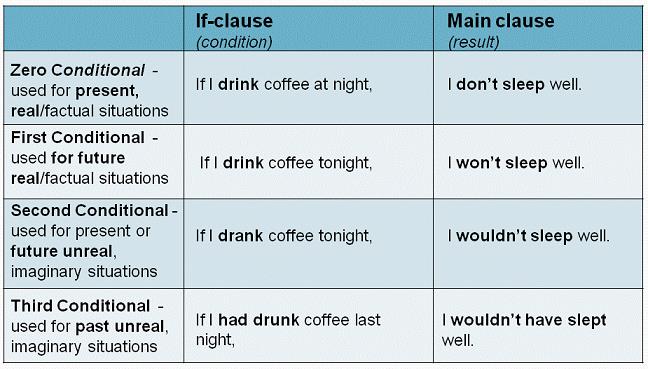Si estás aquí es por qué te resulta difícil aplicar los condicionales básicos del inglés. Antes de pasar al siguiente nivel y aprender el Second y el Third Conditional, deberás saber diferenciar el Zero del First Conditional. Como profesora de inglés, te voy a explicar brevemente en que consiste cada uno, exponiendo una serie de ejemplos que te serán útiles para acabar de entender su funcionamiento.
¿Cuándo utilizamos el Zero Conditional en inglés?
El condicional cero se utiliza en el presente (Present simple), cuando queremos referirnos a hechos que son ciertas, como los acontecimientos o leyes científicas. Habitualmente, los angloparlantes utilizan este condicional para hablar de términos generales, centrándose en la condición y el resultado de estos hechos reales, por ejemplo: “If you spend a lot of time under the sun, you get burnt” (Si pasas mucho tiempo debajo del sol, te quemas)
Estructura del Zero Conditional: If + Present Simple, Present Simple
*La estructura también se puede emplear a la inversa, utilizando primero el Present Simple y después “If”. La única diferencia es que al hacerlo así, no debemos de poner la coma después, por ejemplo: “If I eat too many sweets, I feel sick.” (Si como demasiados dulces, me siento mal.)
Ejemplos del Zero Conditional
- If I have a headache, I take paracetamol.
- If I eat too much, I feel sick.
- If I don’t sleep 8 hours, I’m tired.
- If eat hamburgers too often, I get fat.
- If I study every day, I do well in exams.
Ahora intenta completar las siguientes oraciones, usando el “Zero Conditional”:
- If I do well at school…
- If I watch a sad film...
- If it’s sunny...
- If I don’t water my flowers...
- If I leave the window open...
¿Cuándo utilizamos el “First Conditional en inglés?
El condicional uno se utiliza en el presente (Present Simple), cuando nos referimos a algo que creemos que va a suceder. De hecho, muchos suelen confundir el First Conditional con el Second Conditional, aunque la gran diferencia entre ambos, es que el Second Conditional es para referirse a todo lo contrario: algo que creemos que no va a ocurrir.
Un ejemplo claro del First Conditional, sería: “If you come to my village, we’ll have so much fun” (Si tú vienes a mi pueblo,nos lo pasaremos muy bien)
Estructura del First Conditional: If + Present Simple, Future Simple
*Al igual que en el Zero Conditional, la estructura se puede emplear a la inversa, aunque no es su uso más común. Además, debemos seguir la misma estructura, suprimiendo la coma después del sustantivo, por ejemplo: “You will get wet if you go out when it’s raining”. (Te mojarás si sales cuando llueve)
Las mejores academias de inglés
Ejemplos del First Conditional
- If I win the lottery, I’ll be rich.
- If I skip school, my dad will be angry.
- If I stay out late tonight, I’ll be late for work tomorrow.
- If I get the pay rise, I’ll buy the expensive shoes.
- If I get pregnant, I’ll have to buy new clothes.
Ahora intenta completar, las siguientes oraciones usando el “First Conditional”:
- If my phone is stolen…
- If my flatmate eats my pizza....
- If I speak English every day...
- If I go to the gym every day...
- If I cut my hair...
Espero que este blog, para diferenciar el Zero y el First Conditional, te haya sido de utilidad. Si necesitas mejorar en algún tema más de inglés, estoy disponible en Tusclasesparticulares para darte las clases particulares de inglés que necesites.

Para terminar, te dejo algunas de las posibles respuestas para los ejercicios anteriores.
Ejercicio del Zero Conditional:
- If I do well at school, my mum is proud
- If I watch a sad film, I always cry.
- If it’s sunny, I go to the beach.
- If I don’t water my flowers, they die.
- If I leave the window open, the house gets cold.
Ejercicio del First Conditional:
- If my phone is stolen, I’ll have to get a new one.
- If my flatmate eats my pizza, I’ll be angry.
- If I speak English every day, I will improve.
- If I go to the gym every day, I will get fit.
- If I cut my hair, it will be shorter.



